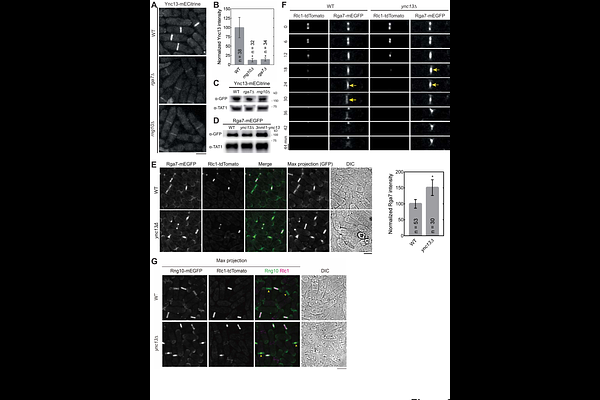Spatial control of secretory vesicle targeting by the Ync13-Rga7-Rng10 complex during cytokinesis

Spatial control of secretory vesicle targeting by the Ync13-Rga7-Rng10 complex during cytokinesis
Zhang, S.; Singh, D.; Zhu, Y.-H.; Zhang, K. J.; Melero, A.; Martin, S. G.; Wu, J.-Q.
AbstractCytokinesis requires precise coordination of contractile-ring constriction, vesicle trafficking and fusion to the plasma membrane, and extracellular matrix assembly/remodeling at the cleavage furrow to ensure faithful cell division and maintain cell integrity. These processes and proteins involved are broadly conserved across eukaryotes, yet molecular mechanisms controlling the spatiotemporal pathways of membrane trafficking remain poorly understood. Here, using fission yeast genetics, microscopy, and in vitro binding assays, we identify the conserved module including the Munc13 protein Ync13, F-BAR protein Rga7, and coiled-coil protein Rng10 to be critical for precise and selective vesicle targeting during cytokinesis. The module specifically recruit the TRAPP-II but not exocyst complex to tether vesicles containing the glucan synthases Bgs4 and Ags1 along the cleavage furrow. Ync13 subsequently interacts with the SM protein Sec1 for vesicle fusion. Mutations in this pathway disrupt septum integrity and lead to cell lysis. Our work provides key insights into how membrane trafficking is tightly controlled to maintain cell integrity during cytokinesis.